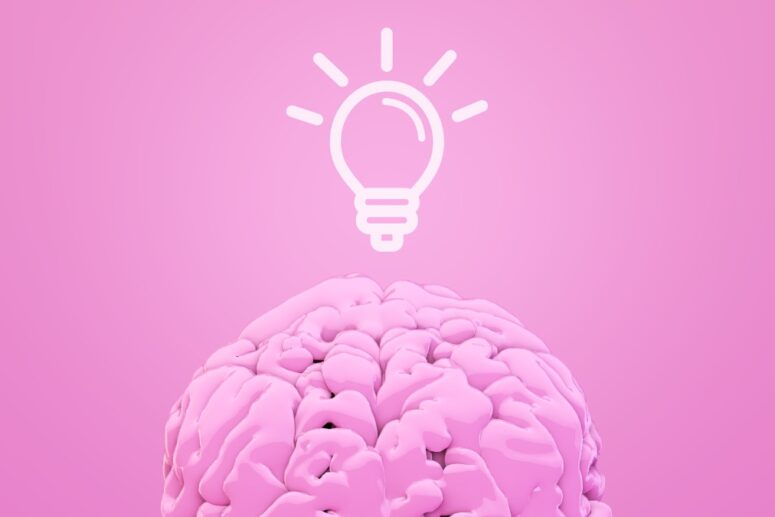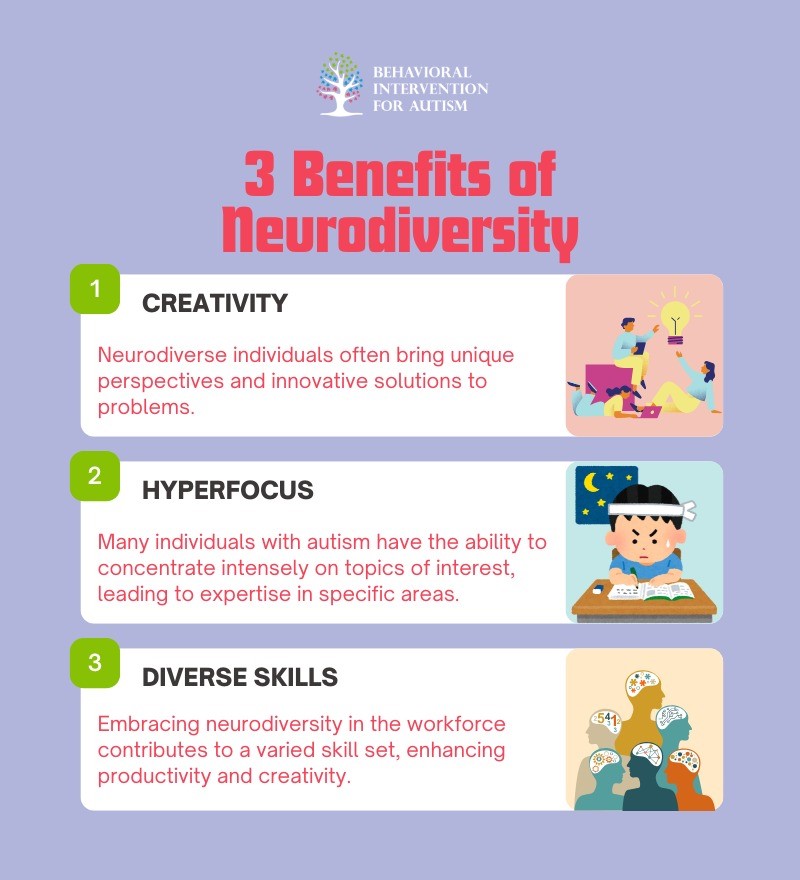
Table of Contents
Recognizing and appreciating neurodiversity is essential for fostering an inclusive environment, especially for parents and caregivers of individuals with autism. This concept encompasses the natural variations in brain functioning and emphasizes the acceptance of diverse neurological conditions.
Concept of Neurodiversity
Neurodiversity refers to the idea that there is natural variation in how people’s brains function, and no single “correct” way of thinking or perceiving the world exists. This movement promotes understanding and acceptance of diverse neurological conditions, including autism, ADHD, and learning differences.
The term “neurodiversity” originated in the 1990s as a response to combat stigma against individuals with conditions like autism and dyslexia. This concept encourages the belief that all individuals, regardless of neurological differences, should be valued and supported in their unique perspectives and abilities.
Neurodiverse Individuals
Neurodiverse individuals, particularly those on the autism spectrum, often think, learn, and interact with the world in unique ways. This perspective can lead to a multitude of strengths and challenges. Understanding these differences can help parents and caregivers create supportive environments that cater to their needs.
Establishing a formal diagnosis for individuals with autism spectrum disorder (ASD) is crucial. This diagnosis helps secure access to vital social and medical services, enhances community connections, and addresses associated health issues. Tailored behavioral supports and interventions can significantly improve the quality of life and developmental potential for individuals with ASD.
Understanding neurodiversity paves the way for a more compassionate society, one that values the uniqueness of each individual’s neurological makeup. This understanding is fundamental for parents and caregivers supporting those with autism.
The Neurodiversity Movement
The neurodiversity movement has gained significant traction over the years, empowering individuals with various neurological differences and promoting a more inclusive society. This movement emerged with the goal of increasing acceptance and inclusion of all individuals while embracing neurological differences. Judy Singer, an Australian sociologist, was instrumental in coining the term, aiming to promote equality and inclusion for “neurological minorities.”
This movement recognizes that various neurological conditions should not be seen solely as deficits or disorders. Instead, these differences are viewed as part of the natural variation in the human population that deserves respect and understanding.
Focus on Strengths and Talents
A core principle of the neurodiversity movement is to support individuals who are neurodivergent by focusing on their strengths and talents. While conditions like autism, ADHD, and learning differences can present challenges, they can also offer unique abilities. The movement emphasizes the importance of creating inclusive environments that nurture these strengths.
Individuals with autism may possess exceptional creativity, hyperfocus, and novel perspectives that contribute positively to society. By recognizing and valuing these strengths, parents and caregivers can better support neurodiverse individuals in realizing their potential.
The neurodiversity movement aims to reshape societal views around autism and other neurological conditions, encouraging an atmosphere of acceptance and empowerment. By understanding what neurodiversity means, parents and caregivers can advocate for their loved ones and contribute to a more inclusive community.
Embracing Neurodiversity
The concept of neurodiversity highlights the importance of recognizing and valuing neurological differences, particularly in individuals with autism. Embracing neurodiversity involves creating supportive and inclusive environments that cater to the unique needs of neurodiverse individuals.
Creating Inclusive Environments
Creating inclusive environments for individuals with autism requires a proactive approach. This involves adapting physical spaces, fostering understanding in social settings, and implementing supportive educational practices. The neurodiversity movement emphasizes including individuals with autism, ADHD, and learning disabilities in all aspects of life.
3 key strategies for creating inclusive environments include:
- Sensory-Friendly Spaces: Providing quiet areas with reduced sensory stimuli can help individuals with autism feel comfortable and focused.
- Flexible Learning Approaches: Adapting teaching methods to accommodate various learning styles promotes better engagement and understanding.
- Community Awareness Programs: Educating the community on neurodiversity and autism fosters empathy and reduces stigma.
3 Benefits of Neurodiversity
Recognizing and embracing neurodiversity can lead to numerous benefits, both for individuals and society at large. The focus on strengths and talents associated with neurodiverse individuals enriches our communities and workplaces. Key benefits include:

The recognition of neurodiversity promotes equality and inclusion, transforming the way society perceives individuals with autism. With continued advocacy, inclusive practices can create environments where everyone feels valued and empowered.
Respectful Language and Support
Understanding the importance of respectful language when discussing neurodiversity is essential for promoting inclusion and acceptance. Language shapes perceptions, and using inclusive, nonjudgmental terms demonstrates respect for individuals with autism and other neurodevelopmental differences.
Importance of Respectful Language
Neurodiversity advocates emphasize the need for inclusive and respectful communication. This approach encourages asking individuals about their preferred terminology, which varies from person to person. Using respectful language is vital for clinicians addressing the mental and physical health of individuals with neurological conditions.
Aspect | Description |
Inclusive Language | Using terms that honor individuals’ identities and experiences. |
Nonjudgmental Phrasing | Avoiding language that implies deficits or negative connotations. |
Person-First vs. Identity-First Language | Person-first language emphasizes the individual first (e.g., “individual with autism”), while identity-first language (e.g., “autistic individual”) may be preferred by some. |
Adopting respectful language can encourage a supportive community and improve interactions with individuals on the autism spectrum.
Tailored Support and Interventions
Accessing tailored support and interventions is crucial for individuals diagnosed with autism spectrum disorder (ASD). Such interventions help maximize quality of life and developmental potential. Establishing a formal diagnosis is often necessary to receive appropriate services and support systems.
3 types of tailored supports include:
Type of Support | Description |
Behavioral Interventions | Strategies designed to improve specific behaviors through reinforcement. |
Educational Supports | Customized teaching methods to accommodate individual learning styles. |
Social Skills Training | Programs aimed at improving interpersonal skills and social interactions. |
Recognizing the variability within the autism spectrum underscores the need for individualized approaches. With appropriate support in place, individuals can thrive and navigate their environments confidently.
Neurodiversity in Society
The concept of neurodiversity encompasses a broad understanding of different abilities and challenges individuals may face, particularly relating to autism. Recognizing and valuing diverse abilities is essential for fostering an inclusive society.
Diverse Abilities and Disabilities
Neurodiverse individuals often exhibit unique talents and skills, which may include extraordinary cognitive abilities. For instance, some may possess exceptional memory, advanced mathematical skills, or an extraordinary focus on detailed tasks.
A notable example is Max Park, a Rubik’s cube speed solver who, despite being diagnosed with autism, has achieved world champion status and set multiple world records. His story illustrates how neurodiverse individuals can excel in various domains, highlighting their potential rather than their challenges.
Employment and Inclusion
The workplace can significantly benefit from neurodiverse talent. Companies such as Microsoft, SAP, Goldman Sachs, JPMorgan Chase, and Dell are increasingly recognizing the importance of employing neurodiverse individuals. These organizations have noted that such employees often bring unique perspectives and problem-solving abilities to the table.
Many industries, particularly data, IT, software design, car design, and product testing, are actively looking for neurodiverse talent due to their specialized skills that can enhance productivity and innovation. Initiatives like Microsoft’s specialized hiring program demonstrate a commitment to creating more inclusive hiring practices.
Understanding and leveraging the strengths of neurodiverse individuals not only supports societal inclusion but also drives innovation and growth within various sectors. Cultivating environments that embrace diverse abilities can lead to enhanced collaboration and creativity, ultimately benefiting everyone involved.
Take the Next Step Toward Supportive Care
Discover how Behavioral Intervention for Autism can help you or your loved one embrace neurodiversity with confidence. We offer personalized ABA therapy services designed to celebrate individual strengths while addressing unique challenges. Our dedicated team focuses on creating supportive, evidence-based plans that foster growth and independence. Ready to make a difference? Reach out today and let us guide you on this journey. Explore the benefits of our tailored ABA programs in Florida and experience the high-quality care that sets us apart. Don’t wait—contact us now and start building a brighter future.
Sources:
- 9 Common Obsessions of Children With Autism You Should Know - February 25, 2025
- What is Neurodiversity? A Guide to Embracing Differences - February 25, 2025
- Understanding Hyperfocus in Autism: What It Means and Why It Happens - February 25, 2025


